Dan Kennedy is the duke of direct response. 👑
He knows exactly how to deliver marketing messages that get people to take action.
His inspiring, compelling, and clear copy is what makes him one of the highest-paid copywriters in the world!
That and his iconic handlebar mustache.
Dan has earned a place in the copywriting hall of fame amongst icons like Gary Halbert, John Carlton, Joe Sugarman, and Gary Bencivenga.
And what better way to learn copywriting than from a master himself?
This blog post is for copywriters of all levels who want to inspire more action in their readers using Dan Kennedy’s ultimate sales letter formula.
“How you deal with failure determines whether or not you ever get the opportunity to deal with success.”
Dan Kennedy
How you approach copy is everything – your mindset
Dan Kennedy does not have a college degree.
He had never worked in a mailroom for an ad agency and had no desire to work his way up the corporate ladder. (just like you!)
He got his first paid copywriting gig in high school and opened up his own agency two years later.
By devouring books, using intuition, learning how to sell, and building idea files, you, too, can become a professional copywriter without any degrees.
“I am convinced that just about anybody can learn to craft very effective sales letters.”
Dan Kennedy
Read this quick start guide or below for more information.
Four mindsets to successful copy
- Don’t be intimidated by the idea or process of writing.
- Recognize the value and power of your unique understanding of business, products, services, and customers.
- Develop a selling mentality.
- Avoid perfectionism; you don’t need to be perfect to get results.
Combine the mindsets with these key habits
- Build a Reference File: a file where you answer the question: “What do I know about our customers, products, and business?”
- Build a Swipe File: a file of ads, articles, and ideas that are organized to help you draw inspiration.
- Write copy: put into practice your newly acquired skills. Even if you don’t have a client. (Enroll in Copycademy to get your first writing gig)
If you want mentorship and would like to take your skills and income to the next level, enroll in my copywriting bootcamp.
Before you write a single word
Ever had writer’s block? Do you fear the blank page? (Then read this guide on 10 writer’s block cures)
Pay attention to what Dan has found the cure to be… getting “into” the Customer with the goal of understanding.
“You never really know a man until you stand in his shoes and walk around in them”
James Van Praagh
You need to understand your customers on an intimate level. Uncover their desires, identities, fears, and motivators.
To persuade or motivate a person, you need to understand that person.
This comes down to research.
This is one of the most important steps in writing copy because there are no possibilities for corrective feedback like in sales. You have to be able to anticipate roadblocks and sneak past them!
Figure out why they won’t respond.
Then, get into the offer.
Equally as important to overcome the blank page syndrome is studying the product.
What Dan recommends doing is demonstrating the product as if you were a salesman. Play with the product yourself if possible.
Brainstorm all the exciting features and benefits you could get out of this product.
Approach the product as if you were the customer combining the above to form a full perspective of how the product will be used.
Remember that features tell, benefits are what sell! Learn more about features vs benefits here.
Every product has flaws too.
Dan Kennedy believes in embracing the downsides of a product!
Acknowledge product flaws and force yourself to address the potential questions, concerns, and objections in your copy.
Take competitive disadvantages and turn them into good fun selling stories.
Make the bad work for you to build trust. 🤝
The Dan Kennedy system for motivating action
The main differentiator between copy and content is ACTION. (This is what makes copy successful or not!)
Copy persuades a reader, viewer or visitor to take a specific action. Otherwise, it bores people to death and leaves you with an empty wallet. 👎
Dan Kennedy is a master at getting readers to take action.
In 2015 alone, he wrote ads that brought in $100 Million in sales just that year!
Here are 5 Foolproof Ways mentioned in The Ultimate Sales Letter that will get your readers to take decisive action:
Using intimidation to motivate action
While copy is usually friendly and conversational, a little intimidation never hurts anyone.
Humans are more responsive to people of power and motivated by fear.
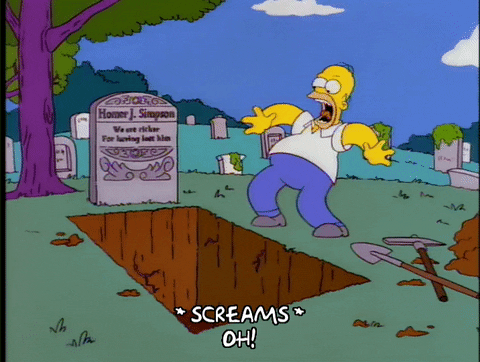
Power comes in many different forms.
For instance, people who are wealthy, attractive, intelligent, talented, incredibly charming, physically big, or occupy a position of authority can be considered powerful.
They have influence over others.
As a salesman/saleswoman, you have the solution to a desperate problem your prospect is facing. What that does is allow you to shift the power dynamic in your favour when it is time for action.
So how can you effectively use intimidation in your copy?
Limited inventory or availability
What is scarce is more valued! Take this sneaker example:

These are ‘Shattered Backboard’ Air Jordan 1s with a backwards Swoosh (a product defect)!
A pair of Air Jordans recently turned up with the same factory defect and sold for a whopping $96,000. 👟
People are willing to take action on things that won’t last in order to not miss out!
Harnessing the bandwagon effect
Simply put, the bandwagon effect is when people do something because other people are doing it. They do it regardless of their own beliefs. This is to do with the psychological principles of herd mentality.
A few examples would be Black Friday, the Banting Diet, TikTok trending videos, investing in Tesla, and every Apple campaign ever…
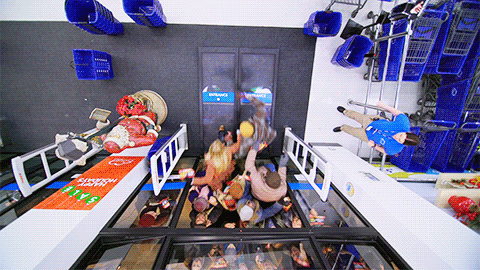
When you can leverage social trends, and everyone without your product has FOMO, you’re going to have a great launch/campaign. 👍
Use social proof like testimonials, case studies, and real-life examples to create fear of missing out.
Harnessing the snob effect
To use this strategy, you challenge the reader’s ego.
Make the product seem like only a certain type of individual can fully appreciate it. (Try creating the image of prestige, status, and power.)
For example, a higher price tag makes people desire a product more and attribute a quality to it.

You get people to buy into the illusion that they are more important, sophisticated, or better than others when they buy your product.
Luxury brands do a very good job of harnessing the snob effect.
You can only buy if…
This strategy qualifies the reader and challenges them.
Your sales letter will present certain criteria that the reader must meet for him to be eligible to purchase your product.
Make readers go through self-qualification. Convince themselves that the product is the best fit for their problem.
The more hurdles your prospect jumps through willingly, the more likely they are to take action.
Check out the Accelerated Copywriting program from AWAI if you want to learn these strategies and more.
Only some can qualify…
This strategy is used when you appeal to a person’s desire to be part of an elite group for approval and recognition.
Again, the more hurdles that qualify your prospect, the more likely they are to take action.
Show readers something interesting, appealing, or desirable, then snatch it away from them and play hard to get.
For instance, you might say that “Only serious marketers can qualify to take this online course.”
It makes the product (an online course in this case) seem more alluring since there’s limited access.
Demonstrate ROI and sell money at a discount
People hate uncertainty.
Why? Because uncertainty = danger or risk!
So, how can you ease your reader’s minds and make sure they don’t jump to negative conclusions?
Give them certainty.
Minimize the risk by demonstrating how your products have gotten the result that you are promising. Define clear benefits for both the customer and the company.
You can demonstrate this through case studies, testimonials and free trials.
Look how Evernote uses a testimonial and logo bar to build trust with users:
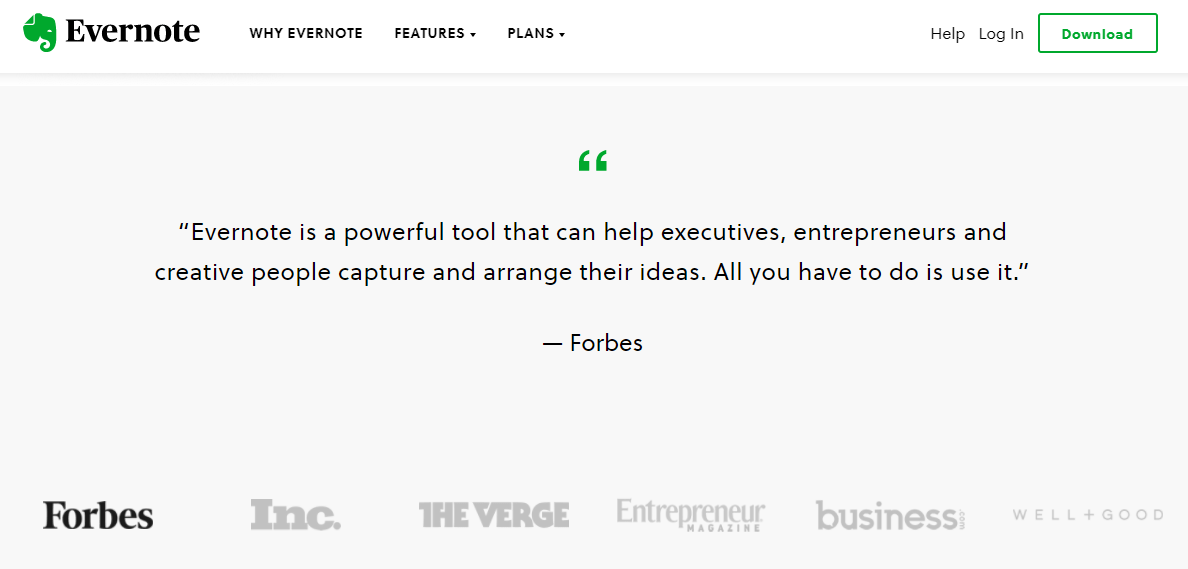
Another example is the ClickFunnels home page.
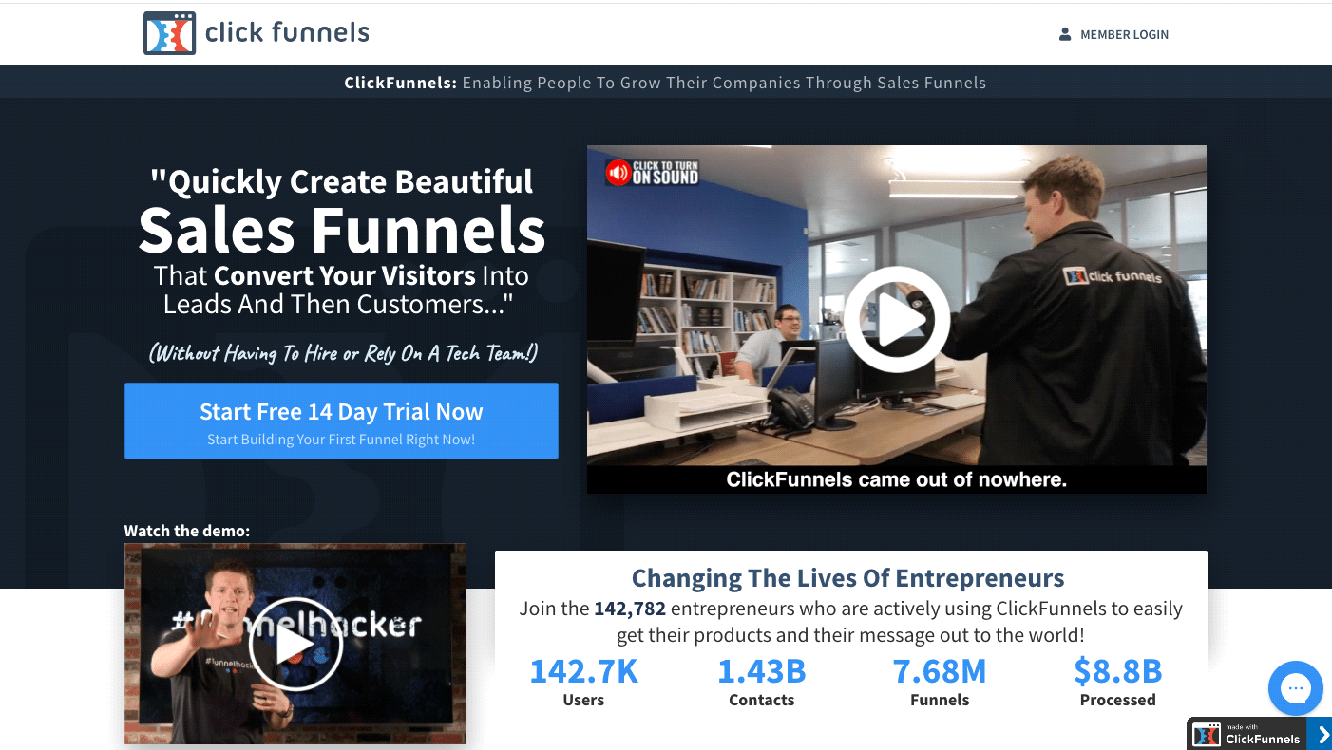
Note how it displays how many users are on the platform along with the revenue they’ve processed—$8.8 billion! 🤑
What this signals to customers is that the company gets results. If other businesses can do it, so can they.
This is especially important for business products and services. The one thing on customers’ minds is the return on investment.
Appealing to the ego
Nobody cares unless there’s something in it for them.
We call this The What’s in It for Me (WIIFM) Principle.
Dan asks the question, “How can you make what you are selling appeal to the innate desires of your market?”
How can your product make them feel more important?
How can you satisfy the ego need they are chasing after?
For instance, imagine buying an expensive watch like Tag Heuer. ⌚
You could love the look, but you got it mostly to show that you are important and that your time is worth a lot!
Your product is convincingly portrayed as a status symbol. The sales copy should be positioned as such to maximize response.
Create a strong guarantee
The best way to bridge the gap between expectations and the product delivery is with a strong guarantee.
After all, guarantees boost response (see what Neil Patel has to say!)
Done right, guarantees effectively deal with skepticism, cynicism, and fear in your customers. It inspires decisiveness and feelings of no/lower risk purchase.
The most basic and effective way to implement this strategy is with a money-back guarantee. This helps customers feel at ease as they can get their money back.
Look at this guarantee for one of Carmine’s online courses:
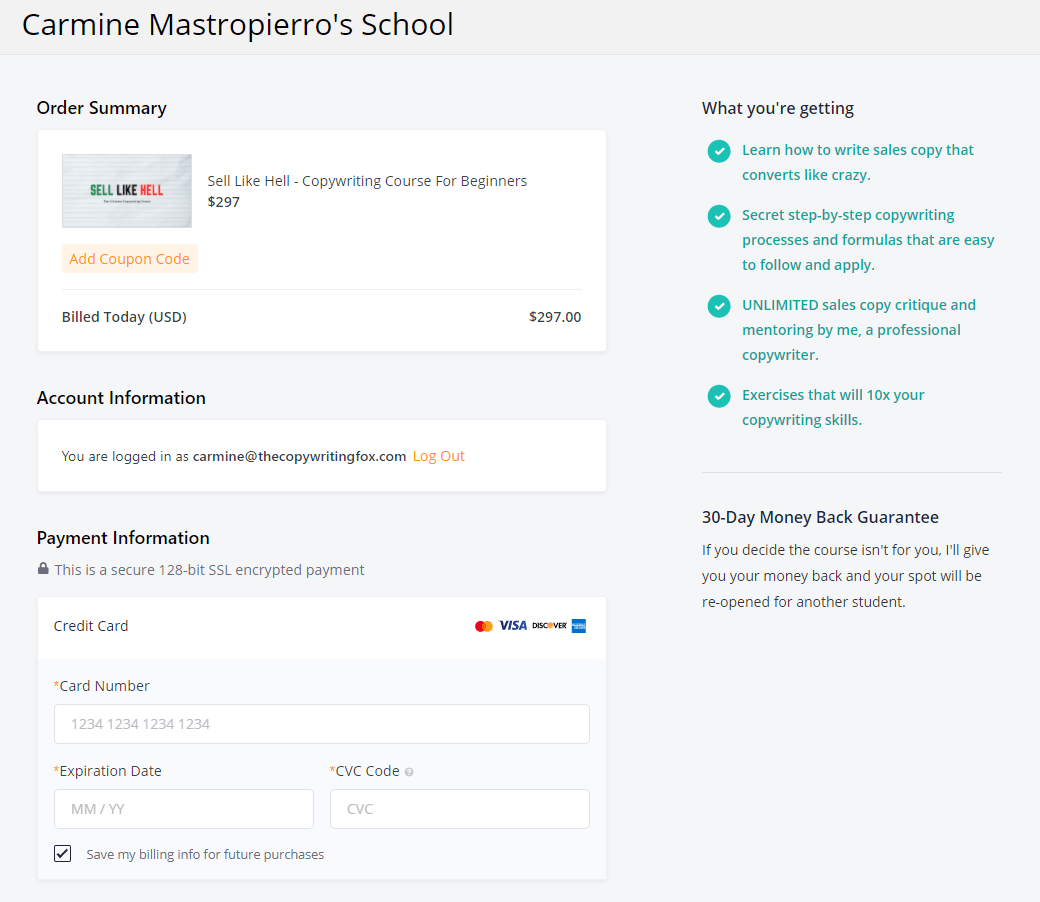
Other guarantees to consider include:
- Lowest price guarantee
- Free trial guarantee
- Lifetime warranty
- Satisfaction guarantee
Another strong approach is offering bonuses that customers can keep if they refund their money. This is what Dan calls “Refund but keep the premium.”
Bonuses are a staple in advertising and copywriting as they add extra incentive and value for purchasing.
If someone can keep them if they aren’t satisfied, they can’t lose!
Say it, say it again, and say it once more
Redundancy means repeating information, and contrary to the usual definition, redundancy in copy is good!
The more you repeat things, the more you hit home!
You want to repeat crucial promises and guarantees to put ease and confidence in the minds of your customers.
Repeating sharpens the image you are trying to place in your customer’s mind, whether it be positive or negative.
This way by the time they reach the end of a sales letter, they don’t forget the most important parts of the offer.
I also recommend summarizing the features, benefits, offers, and bonuses near the end, so they have a neatly organized pitch.
Reduce friction with free trials
Free trials greatly reduce the need for aggressive selling.
A product or service practically sells itself if prospective customers are able to extensively explore what you’re offering on their own.
This low-pressure environment encourages action.
Once the trial is up, prospects will determine if your offering is a beneficial one, and then they will proceed to payment.
It also creates a sense of urgency and scarcity since they may have loved the product but don’t have access to it any longer.
Check out the social media marketing platform Buffer for illustration:

They offer a 14-day free trial which allows users to test-drive the software. No strings attached.
Be a storyteller
Humans are hardwired for stories.
The more you can harness the power of engaging and compelling stories in your copy, the more persuasive you become.
Stories affect the brain in many different ways.
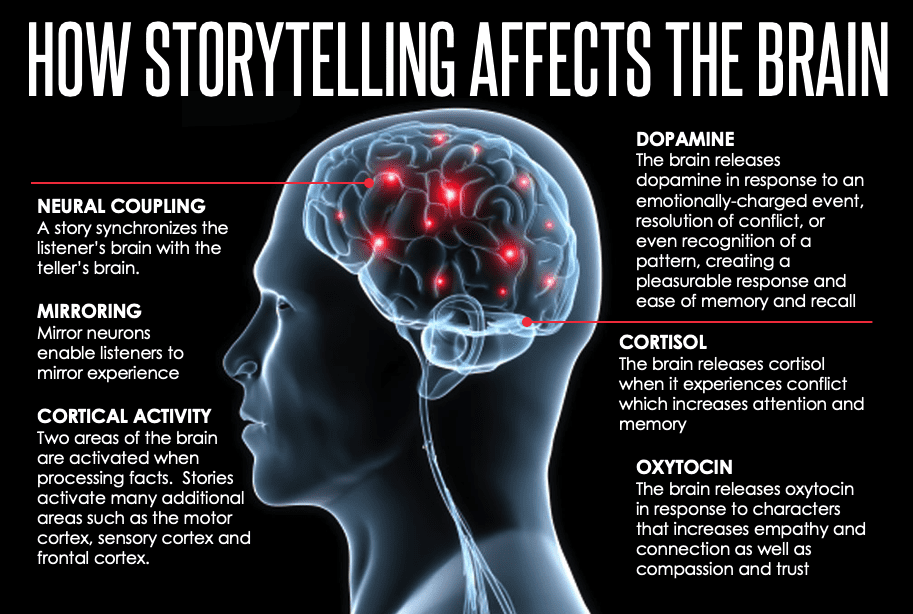
This includes connecting different regions, releasing oxytocin/dopamine, and more.
Read Carmine’s full guide on storytelling in copywriting.
Advanced Dan Kennedy copywriting strategies to take your copy to the next level
These are copywriting strategies that Dan Kennedy would commonly use with his million-dollar campaigns.
#1 – “Enter the conversation already occurring in the customer’s mind” – Robert Collier
What will your customers be thinking or talking about the day they see your sales copy?
What pain points are they experiencing?
What emotions are they feeling?
Think of copywriting as continuing the conversation that’s already started in the customer’s mind.
Gradually transition the sales copy into the product and offer as a solution.
Dan Kennedy says that understanding your customer’s situation when they are going to engage with your advert is crucial for this reason.
It helps them harmonize with the advertisement and understand they are in the right place.
If you need tools to help you understand and market to your customers, try HubSpot or ConvertKit.
#2 – The hidden benefit
Every product has several benefits. However, there is always one that stands out from the rest.
And this is the benefit that customers are truly after.
Dan Kennedy gives an example in his book The Ultimate Sales Letter of a professional conference.
People weren’t just attending this conference to be better entrepreneurs but to have more free time to golf. 🏌️♂️
Naturally, Dan positioned advertisements for the conference to present the benefit of being able to golf more with the time they’d save from its content.
This had a drastically better response.
Think deeply about your prospect.
What keeps them up at night?
What are their hobbies, demographics, and values?
Listen in on their conversations.
You may find something out of the left field that could make an effective benefit to focus on.
#3 – Use magic words
Every word has a meaning, emotion, and picture attached to it.
That’s why you must carefully craft every word in your advertisements to create a very specific experience.
For example, if I say the word “Miami,” what comes to mind?
Probably palm trees and the beach, right? 🌴
How about “Italy?” Perhaps you think of wine, pasta, and the great Colosseum. 🍷
Dan Kennedy urges copywriters to use persuasive, emotional, and powerful words to generate a greater response.
Here are 380 persuasive words to use in your copy!
#4 – Flag the reader and appeal to them personally
Every advertisement should be written by a small segment of people.
This is what we call a buyer persona or ideal customer profile.
It’s not made for everyone. Just a tiny group of customers.
Targeting everyone is a surefire way to drain the budget and see little results.
You can grab the attention of the right people by “flagging” them.
This is done by addressing them in the headline and throughout the body of the sales copy.
“Attention Freelance Writers” in the old sales letter for my copywriting course speaks directly to a certain group of people, for example.
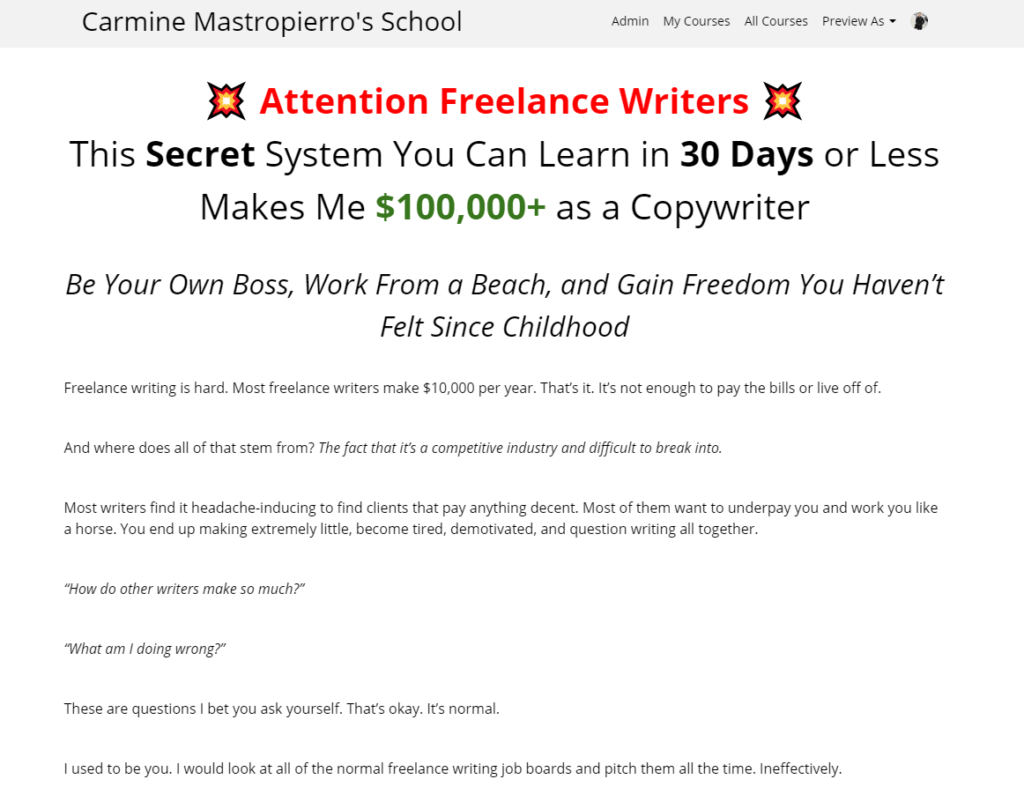
#5 – Pain, agitate, solve
One of the most tried and true copywriting formulas is pain, agitate, solve.
This is applied by first addressing the pain point of the reader.
Then, you agitate it by talking about the symptoms.
Finally, a product or service is positioned as the solution.
The goal of this formula is to get relevant emotions boiling, so people want to learn more about how to solve them.
You can use Jasper’s “PAS Framework” module to let artificial intelligence take care of writing for you.

Learn more about this technique here.
#6 – Masquerade an ad as something else
People see ads. Lots of ’em.
This has created something known as advertisement fatigue.
Consumers are less likely to engage with an ad and respond to it as they are tired of seeing them very often.
One way to circumvent this and increase response is by positioning the ad to not look like one.
The best way to do this is through an advertorial which s a max between an advertisement and an editorial.
Think of it like an article that educates the reader on a relevant topic while subtly plugging a certain product or business.
Final thoughts on Dan Kennedy’s Ultimate Sales letter system
Dan Kennedy is one of the best copywriters of all time.
His book The Ultimate Sales Letter needs to be on the shelf of every copywriter. No questions asked.
Here are some of the main takeaways from today’s article:
- Copywriting begins with your mindset. Educate yourself, don’t be a perfectionist, and learn how to sell.
- Build a swipe file, and reference file, and write copy on a regular basis.
- Intimidate readers to take action through low inventory, the bandwagon effect, and other strategies discussed.
- Clearly communicate the return on investment of a product to “sell money at a discount.”
- Appeal to the customer’s ego to be better, wealthier, more powerful, etc.
- Offer a strong guarantee to overcome objections and uncertainty.
- Repeat the main offer in an advertisement, so customers don’t forget.
- Offer free trials to get people to try the product and want more.
- Use storytelling to deeply connect with readers’ emotions.
Watch my video breaking down an Agora Financial sales letter if you enjoyed this blog post!














